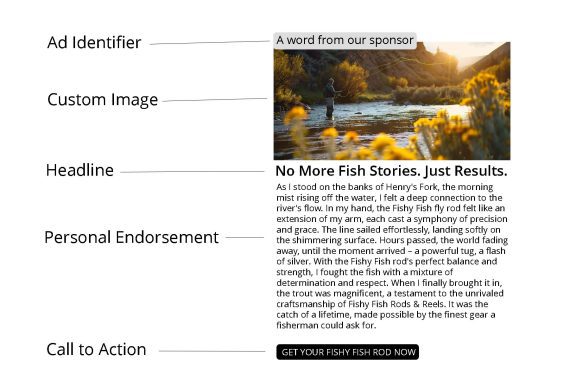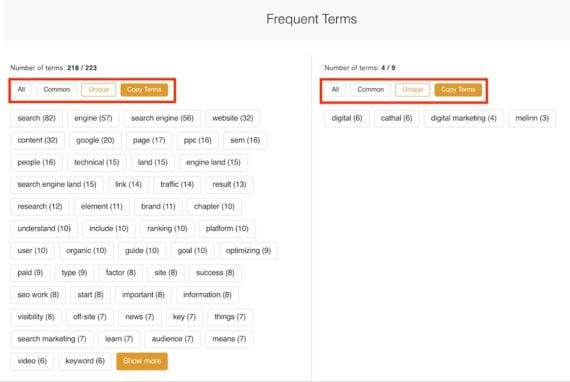Google Ad Manager has quietly published documentation for a beta version of an advertising tag for email newsletters.
Email ads are cookie-proof. They do not depend on third-party tracking cookies for targeting. The end of tracking cookies in web browsers (as soon as 2025) has publishers and advertisers searching for new channels.
Email’s targeting capability could be the primary reason GAM is adding support.
Also read: What is a data center or Internet data center?
Email Ads
Email ads typically fall into three categories:
- Sponsorships: flat rate.
- Context-based: priced per action.
- Subscriber-targeted programmatic: priced per action.
In a technical sense, GAM is adding support for all of these. But functionally, the beta will best support programmatic ad slots. Let’s consider each type and then look at ad formats.
Sponsorships
Newsletter sponsorships are often personal endorsements of the sender. In the example below, the photograph may be the newsletter author using the product on a fishing trip. The ad is the author’s recommendation.

A newsletter sponsorship is often a personal endorsement from the sender.
In this case, the fishing gear promotion resembles an old-style print or television ad. It’s mass media on a small scale. A newsletter publisher with an audience of fly fishermen sells a sponsorship to a fishing gear company that goes to everyone on the list.
Sponsorships can transfer trust from the newsletter to the advertiser and produce strong sales.
Pricing for sponsorships is typically a flat rate.
Context-based
Context-based ads focus on the email’s subject matter and are similar to sponsorships with one advertiser per deployment (sometimes in multiple locations), sent to all subscribers.

Context-based performance advertisers compose the ads and target an email’s context.
Context-based performance ads most often feature advertiser-written copy. There is no personal endorsement.
The pricing is usually action-based, such as cost-per-impression, cost-per-click, or cost-per-sale.
Programmatic
Subscriber-targeted programmatic ads are the email equivalent of pay-per-click ads on Google search or social media. This ad unit is a linked image.

This ad unit is essentially a digital display advertisement.
Importantly, the ad is based on the recipient, not solely on the content. So, someone reading about rods and reels might see a retargeting ad for laundry detergent.
In theory, a fly fishing newsletter with 100,000 subscribers might show 100,000 different ads.
Pricing for programmatic ads is performance-based.
Ad Formats
Inserting sponsorship or context-based ads requires little setup since every subscriber sees the same headline, ad copy, and call-to-action. Publishers can use HTML or drag-and-drop tools for those items, depending on the email platform. It is a native ad, meaning its format is identical to the newsletter’s format, i.e., native HTML.
Programmatic ads from Google Ad Manager and all other providers use a linked HTML image tag that includes a unique identifier for each subscriber, but not ad components such as a headline.
<div class="sponsorship">
<a href="...">
<img src="...&clkk=UNIQUE_ID">
</a>
</div>
When a subscriber opens the newsletter, the email client — Gmail or Apple Mail, for example — requests the image from the ad’s server. The server reads the subscriber’s unique ID and returns an ad image targeted at that person.
The image will include all ad components: headline, copy, CTA.
GAM Email Ad Tag
Google Ad Manager requires two email anchor tags <a> and an image tag <img>. Let’s focus on the image tag to demonstrate how parameters are passed to the ad server.
First, the src image-tag property will start with a path to the ad server.
https://securepubads.g.doubleclick.net/gampad/ad
The newsletter publisher will then append parameters to this base URL.
| ptt | Identifies the ad as a newsletter and must have the value “21.” |
| iu | Specifies the Ad Manager ad unit to display. |
| sz | An HTML-encoded list of acceptable ad sizes where 216×36|300×50|320×50 would be 216×36%7c300x50%7c320x50. |
| clkk | The unique subscriber identifier. |
| clkp | Specifies the ad slot in the newsletter, i.e., “top” or “middle”. |
| url | The “view in browser” URL for the current newsletter. |
| t | An optional key-value pair for reporting or performance tracking. |
The most critical parameter is the clkk. It combines a unique subscriber identifier, a campaign identifier, and the date in a day-month-year format.
*|UNIQID|*_*|CAMPAIGN_UID|*_*|DATE:d/m/y|*
GAM prohibits publishers from passing personally identifiable information in the unique subscriber identifier. So send a hashed email address, not the plain text version.
Unit Performance
The GAM tag functions for sponsorships, context-based, or programmatic ads, but it delivers image ads only. Subscribers with images turned off won’t see the message. Moreover, GAM’s image tags link to Doubleclick.net, a prominent ad server. Every ad blocker will remove it.
Thus GAM email tags are best suited for programmatic, as publishers can insert sponsorships and context-based ads without an ad management platform.






